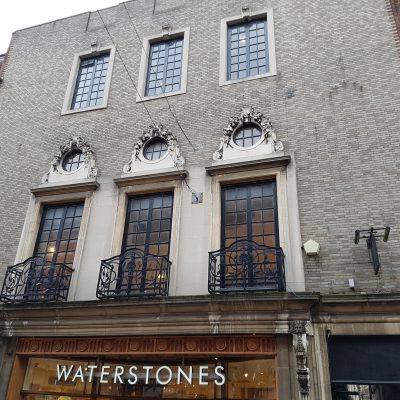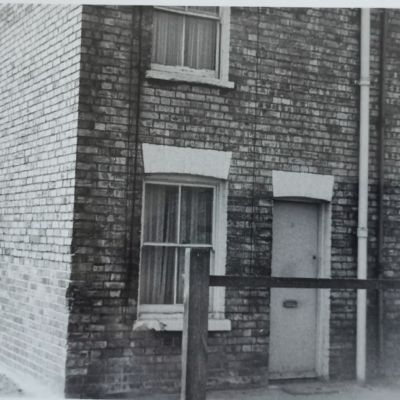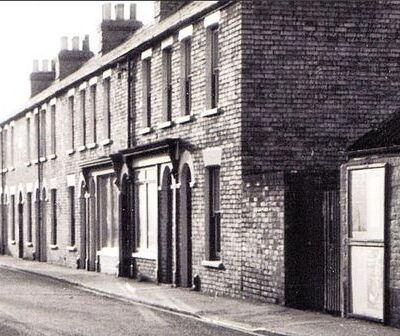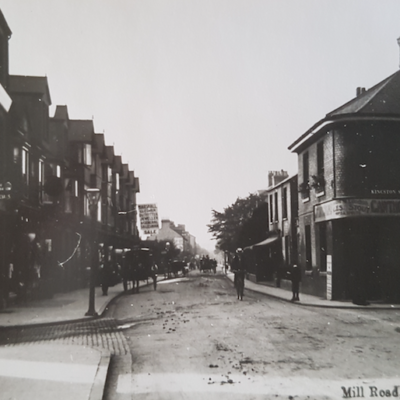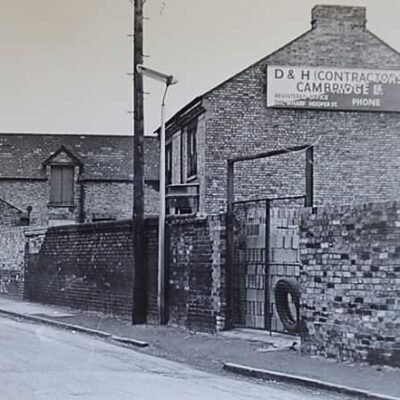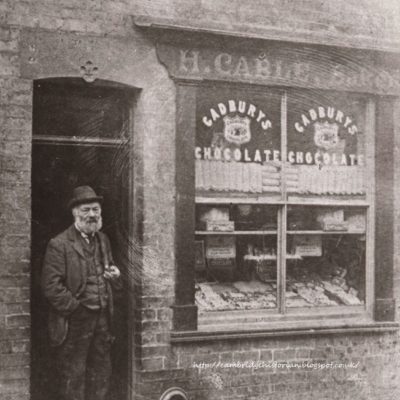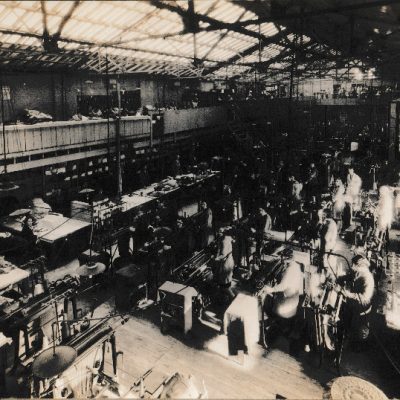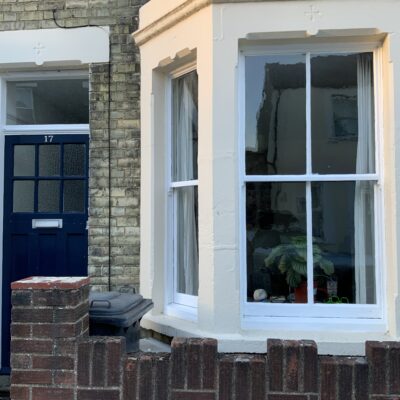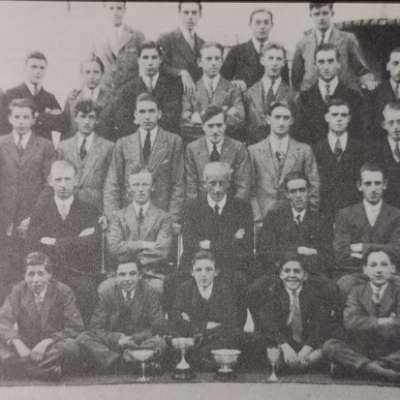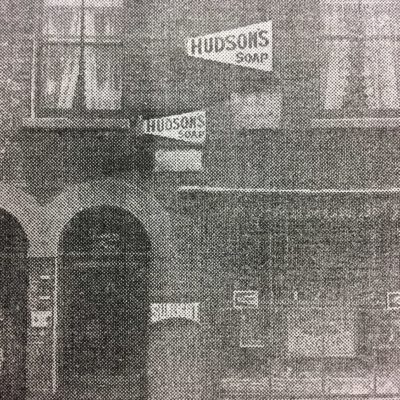Search by topic
- archaeology
- Building of Local Interest
- charity
- church
- crime
- dressmaker
- fire
- Great Eastern Railway
- Listed building
- Mapping Relief
- medieval
- oral history
- poverty
- Public House
- Rattee & Kett
- Religious House
- Roman
- scholar
- school
- Then and Now
- tudor
- women
- work
- world war one
- world war two
Search by text
98 Sturton Street
The History of the Stacey Family
1871 – 1940
In 1871 Sturton Street was unnumbered. The census for that year records William Henry Stacey living on Sturton Street, but it may not have been in this house.
In that year he is aged 47, and works as a coach painter. He was born in the St. Sidwell’s area of Exeter in Devon, and married his first wife, Mary Ann Johns in 1850 whilst living in Mary-le-Bone. On the 1851 census the couple can be found living in London with thie first child, Annie Elizabeth. There was one more child, Ernest Henry, who was born in 1853.
A definite death record cannot be located for Mary Ann, but William remarried in 1856, so it is possible she died giving birth to Ernest, or shortly afterwards. William’s second wife was Mary Ann Ledgar. She was around 35 when they married, she was born in South Elmsall, Yorkshire. The couple are living in St. Pancras in 1861 with William’s older children and their seven month old daughter, Elizabeth Ledgar Stacey.
In 1871 eldest daughter Annie is not with the family and cannot be located. She would be 20 in 1871, so may well have married or be working as a domestic servant in another part of the country. Ernest is going by ‘Henry’ and working with his father as a coach painter. The younghest child is now Charles Edward, aged 7, he and sister Elizabeth are school children.
In 1881 the family is definitely living at number 98 Sturton Street. William, now 58, has been widowed for the second time. His daughter Elizabeth is now 19 and working as a dressmaker, Charles is 17 and working with his father as an assistant coach painter.
The final member of the household is Elizabeth Stacey. She is recorded as being William’s widowed sister, born in South Elmsall, Yorkshire and working as a housekeeper. She is, in fact, his sister-in-law, Elizabeth Ledgar. Elizabeth probably came to live with the family after her sister died, to look after the children.
William and Elizabeth married in 1881.
William died at 98 Sturton Street on the 17th January 1884.
The following year, Elizabeth Ledgar Stacey died at 2 Lascelles Place in St Giles and was buried at Hanwell Cemetery. Lascelles Place no longer exists, but was near St Giles Workhouse, and can be seen on old maps of the area.
Charles married Louisa Avey in 1886. Louisa was born in Subathu, India. Her father, Thomas, had served as a Private with the 38th Regiment of Foot. The couple remain at 98 Sturton Street.
In 1891 Elizabeth Stacey, now aged 70, is head of household. Charles is 30 and works as a coach painter. Louisa and Charles have two children. William Thomas is 4 and Emily is 2.
Elizabeth doesn’t appear on the 1901 Census with the family, and cannot be located. She is, however, still alive at this point. Her death is recorded in the Cambridge Independent Press for the 5th of June 1903, records “STACEY – May 26 at 98 Sturton Street, Cambridge, Elizabeth L. Stacey, aged 84″.
Charles is head of household in 1901. He is now 40 and still working as coach painter. William is 14 and works as a baker’s assistant. Emily is 12 and their are two more children. Charles Edward (8) and Albert (3).
The 1911 census, filled in by the householders, lists no occupation for any of the family apart from Charles, who continues to paint coaches. Emily is 23, probably helping her mother take care of the younger children, but it is unlikely the 19 year old Charles was unemployed. Albert is 14 and also has no occupation listed, his brother William was a baker’s assistant at 14. It is possible that he, and his younger siblings, are still at school.
The three younger children are Henry (10), Annie (7) and George (4). Later records show that George’s full name is ‘ George Frederick Richard’.
The Attestation Document for Charles in November 1914, records him living in Manchester and working as a platelayer on the railways. He enlists as a Sapper with the Royal Engineers, but is discharged in January 1915 as medically unfit for Service.
Charles doesn’t give up. He returns to 98 Sturton Street, and re-enlists in July 1915, joining the Army Cyclist Corps. At the end of the year he has appendicitis and spends 15 days in hospital. He then contracts scabies in May 1916 and again the following month. After the scabies clears up he is transferred to the 7th Battalion Warwickshire Regiment.
Charles is discharged as ‘no longer being physically fit for war service’ a second time in August 1916. “He had an operation for apendicitis at Cambridge Hospital, since then his left leg has always swollen up after exercise and he has pain when the limb is swollen. He walks with a definite limp and his left leg is alway swollen and gives considerable pain, this no doubt is the result of the operation – not caused or aggravated by military service. Not Permanent. Probable duration 6 months” Medical Board Report 10th August 1916.
Unfortunately, the medical board report was inaccurate. His Army Service Records show that he spent the majority of 1917 in Addenbrooks Hospital. A note for September 1917 records “condition has been aggravated by ordinary military service. Permanent – got worse”. Charles is reviewed a week later and that doctor decides it was hospital not military service that aggravated his condition. Six months later, February 1918, the Board decides Charles needs to be in hospital. In July 1918 they change their minds again, he is only 50% unfit.
He died on the 30th October 1918, aged 27. His family placed an ‘In Memorium’ notice in the Cambridge Independent Press a year later. “STACEY – In loving rememberance of my dear son, Charles Edward Stacey of 98 Sturton Street, who, after serving three years with the Colours, passed away at 51 Rawson Road, Liverpool”. His name is inscribed on the St. Matthew’s War Memorial. Apparently, War Service did aggravate his condition.
“STACEY Charles Edward of 98 Sturton Street Cambridge died 29th November 1925 Probate … to Henry Horace Stacey carpenters employee George Frederick Richard Stacey cinema attendant and Annie Elizabeth Stacey spinster”
The 1939 Register was taken in September of that year and Louisa is still living at 98 Sturton Street. She is recorded as “housekeeper”, but it has been crossed out and amended as the more frequently used ‘unpaid domestic duties’. Annie Elizabeth is working as a college servant and Frederick as a cinema attendant.
Emily is no longer living with her family. There is an “Emily Stacey, Patient, Charwoman” at Cambridge Mental Hospital in Fulbourn, and it looks likely that this is the correct record. It is unknown what happens to Emily after this.
“STACEY – In loving memory of our husband Charles Stacey, who died November 29th 1925, also two sons, Pte Charles Stacey, who died October 30th 1918 and William Stacey who died March 1939. ‘Gone from us, but not forgotten, Never shall their memory fade. Sweetest thoughts shall ever linger, Round the spot where they are laid.’ – From his loving wife and family, Sturton Street, Cambridge.” Cambridge Independent Press 1 December 1939
Louisa was buried on the 4th January 1940. Her death was registered in the fourth quarter of 1939, so she would have died at the end of December.
Sources – 1861, 1871, 1881, 1891, 1901, 1911 UK Census, England & Wales Deaths (1837-2007), England, Select Marriages (1538-1973), Civil Registration Death Index (1837-1915), National Probate Calendar (1858-1995), Workhouses.org, Westminster Cemetery Registers (1855-1990), Cambridge Independent Press (5 June 1903) (31 October 1919), India Select Births and Baptisms (1786-1947), British Army Service Records, National Burial Index For England & Wales, Cambridge Daily News (21 December 1920), Cambridgeshire Burials,
Contribute
Do you have any information about the people or places in this article? If so, then please let us know using the Contact page or by emailing capturingcambridge@
License
This work is licensed under CC BY-NC-SA 4.0





